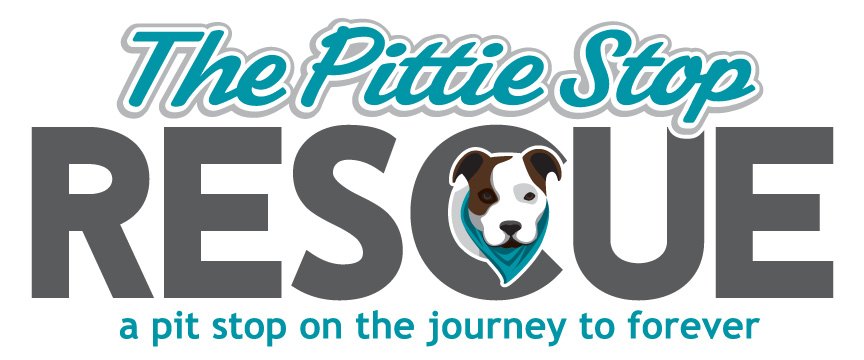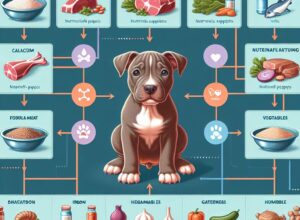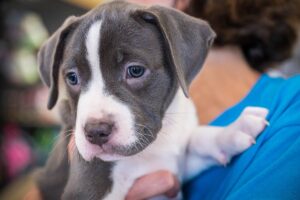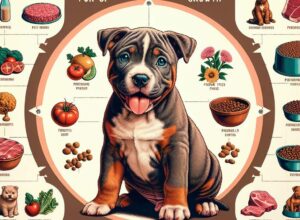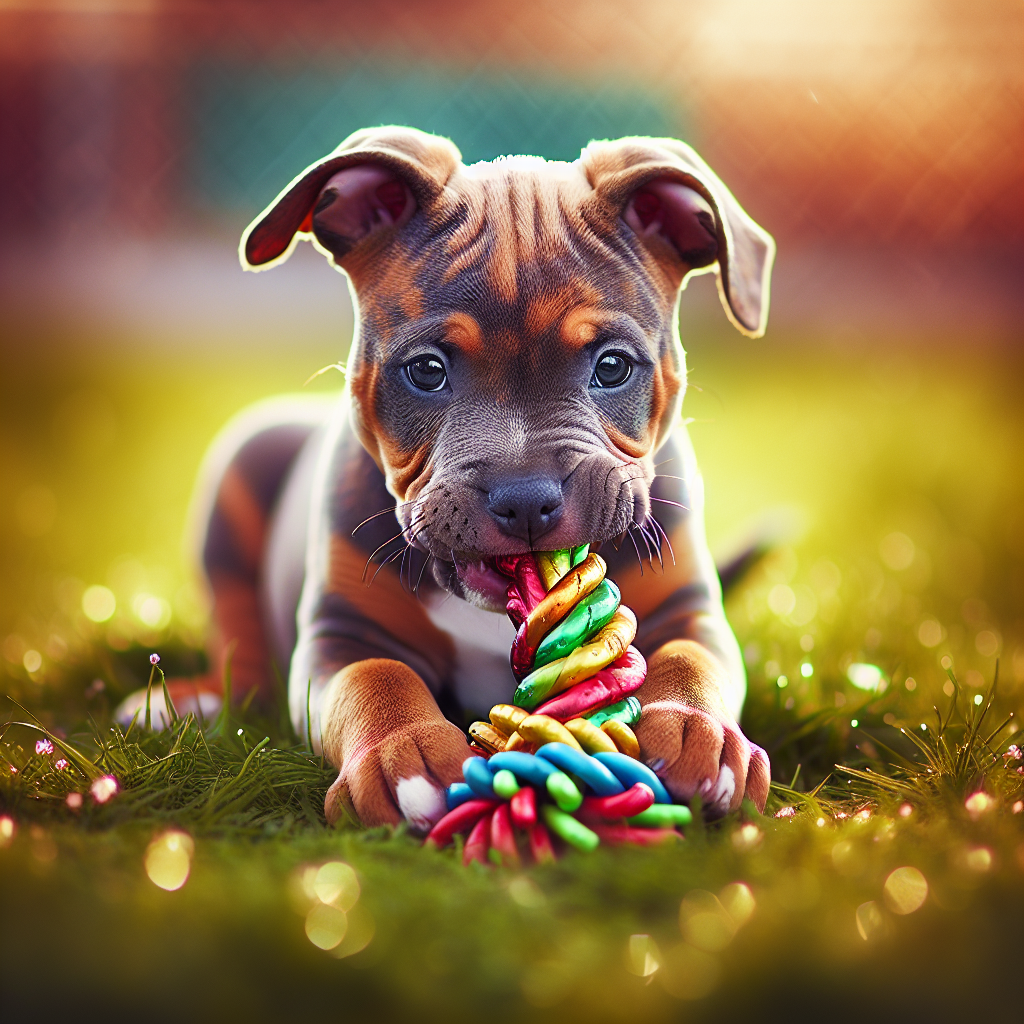
When it comes to raising a pitbull puppy, understanding and preventing pica—a condition where dogs eat non-food items—is crucial for their health and happiness. As a pet owner, it’s your job to spot the signs, know the risks, and take action to safeguard your furry friend from this potentially dangerous behavior.
Key Takeaways
-
Recognize the signs of pica in pitbull puppies, such as chewing or ingesting non-food items.
-
Understand the immediate and long-term health risks associated with pica, including choking and intestinal blockages.
-
Learn how to create a safe home environment to prevent pica by removing tempting objects and providing proper nutrition.
-
Discover behavioral strategies and training tips to redirect your pitbull puppy’s chewing habits.
-
Know when it’s time to seek professional help from a veterinarian or a behavioral specialist.
Spotting the Signs of Pica in Pitbull Puppies
Pitbull puppies are naturally curious creatures, and it’s not uncommon for them to explore the world with their mouths. However, when this exploration turns into a habit of eating non-edible items, it’s time to take notice. Pica can manifest in puppies as a desire to chew or consume a variety of objects, from socks and rocks to plastic and paper. It’s vital to differentiate between normal puppy teething and the more concerning pica behavior.
Common Objects Pitbull Puppies Ingest
While pitbull puppies might chew on almost anything, some objects are more commonly ingested than others. These can include:
-
Household items like socks, shoes, and children’s toys.
-
Outdoor materials such as sticks, stones, and mulch.
-
Personal items with your scent, such as clothing or towels.
Keeping a close eye on what your puppy picks up during playtime or while exploring is the first step in pica prevention. This vigilance can save you from emergency trips to the vet and keep your pup safe.
Recognizing Behavioral Red Flags
Beyond the obvious act of eating strange objects, there are behavioral signs that may indicate your pitbull puppy is developing pica. These red flags include:
-
Excessive licking of floors or furniture.
-
Repeatedly trying to swallow non-food items despite your intervention.
-
Choosing to chew on inappropriate items over their toys.
Keep in mind that puppies learn through experience. If they’ve ingested something once and it resulted in a lot of attention from you, they might try it again. Consistent training and supervision are key to breaking this cycle early on.
Foundational Steps to Prevent Pica
Preventing pica in your pitbull puppy requires a proactive approach. It’s all about setting the stage for a safe and nurturing environment that encourages healthy behaviors while mitigating risks. Let’s dive into the foundational steps that will help keep your puppy safe from the dangers of pica.
Creating a Safe Home Environment
First and foremost, scan your home from your puppy’s point of view. Remove small objects that could be swallowed and secure trash cans. Ensure that dangerous items, like chemicals and medications, are stored out of reach. If there are areas of your home that are harder to puppy-proof, consider using baby gates to restrict access.
Remember, a clean space is a safe space for your pitbull puppy. Regularly check for and remove any debris or hazardous materials from your yard. This limits your puppy’s exposure to potentially harmful objects they might be tempted to eat.
Essential Nutritional Needs
A well-balanced diet is not just about growth; it’s also about preventing pica. Sometimes, pica can stem from nutritional deficiencies. Ensure your pitbull puppy is eating high-quality puppy food that’s rich in all the necessary nutrients. Always have fresh water available, and avoid feeding your puppy table scraps, which can disrupt their nutritional balance and reinforce bad habits.
Behavioral Strategies to Redirect Chewing
Chewing is a natural behavior for puppies, but when it turns into pica, it’s a problem. It’s important to teach your puppy what is acceptable to chew on. This is where behavioral strategies come in handy.
Effective Use of Chew Toys and Treats
Chew toys are your best friend when it comes to managing your pitbull puppy’s chewing urges. Choose durable toys that can withstand vigorous chewing and won’t break into small, swallowable pieces. Introduce a variety of textures and shapes to keep your puppy interested and engaged.
Some puppies may need an extra incentive to focus on their toys. Treats can be an effective way to lure your puppy away from unwanted chewing targets. Use them sparingly, though, to avoid overfeeding.
Interactive toys that dispense food can also be a great way to keep your puppy occupied and reduce the risk of pica. These toys stimulate your puppy’s mind and can tire them out, making them less likely to seek out non-food items.
For example, a treat-dispensing ball can provide hours of entertainment and encourage your puppy to play with their toys instead of household objects.
Training Tips to Discourage Pica Behaviors
Training is essential in preventing pica. Start with basic commands like ‘leave it’ or ‘drop it’ to teach your puppy to let go of non-food items. Consistency is key—every family member should use the same commands to avoid confusing your puppy.
Positive reinforcement is your ally. Reward your puppy with praise, petting, or a treat whenever they choose their toys over other objects. This reinforces the behavior you want to see and makes it more likely to be repeated.
If you catch your puppy in the act of chewing on something inappropriate, don’t punish them after the fact. Instead, redirect their attention to a toy and praise them when they switch their focus. This helps them learn the right from the wrong without fear.
When to Seek Professional Help
Despite your best efforts, some puppies may continue to exhibit pica behavior. If you’ve tried the above strategies and your puppy is still consuming non-food items, it may be time to seek professional help.
Consulting Your Veterinarian
Consult with your veterinarian to rule out any underlying medical conditions that might be causing the pica. Your vet can provide guidance on additional steps to take, which may include dietary changes or further behavioral training.
If your vet suspects a nutritional deficiency, they might recommend supplements or a special diet to address the issue. They can also help you determine if there’s a behavioral component to your puppy’s pica and refer you to a qualified animal behaviorist if necessary.
In conclusion, pica prevention in pitbull puppies requires a combination of environmental management, proper nutrition, behavioral strategies, and knowing when to seek professional assistance. By following these guidelines, you can help ensure your pitbull puppy grows up healthy, happy, and safe from the risks of pica.
Despite your best efforts, some puppies may continue to exhibit pica behavior. If you’ve tried the above strategies and your puppy is still consuming non-food items, it may be time to seek professional help.
Consulting Your Veterinarian
Consult with your veterinarian to rule out any underlying medical conditions that might be causing the pica. Your vet can provide guidance on additional steps to take, which may include dietary changes or further behavioral training.
If your vet suspects a nutritional deficiency, they might recommend supplements or a special diet to address the issue. They can also help you determine if there’s a behavioral component to your puppy’s pica and refer you to a qualified animal behaviorist if necessary.
In conclusion, pica prevention in pitbull puppies requires a combination of environmental management, proper nutrition, behavioral strategies, and knowing when to seek professional assistance. By following these guidelines, you can help ensure your pitbull puppy grows up healthy, happy, and safe from the risks of pica.
Working With a Behavioral Specialist
If behavioral issues are at the root of your puppy’s pica, a behavioral specialist can be invaluable. These professionals can observe your puppy’s behavior in different contexts and offer tailored strategies to modify their actions. They can also train you on how to consistently and effectively respond to your puppy’s pica tendencies.
Most importantly, don’t wait until pica becomes a serious health concern to ask for help. Early intervention is key to a successful outcome.
FAQ
What are the first signs of pica in puppies?
The first signs of pica in puppies often include chewing or licking non-food items excessively and may progress to swallowing these objects. If you notice your pitbull puppy is particularly fixated on inedible items, it’s time to pay attention and intervene.
Can changing my puppy’s diet help reduce pica?
Yes, ensuring your puppy is on a balanced diet that meets all their nutritional needs can help reduce pica. Sometimes, pica is driven by nutrient deficiencies, so a diet change could address the underlying cause.
How can I puppy-proof my house to prevent pica?
Puppy-proofing your house involves removing small, ingestible objects from your puppy’s reach, securing trash cans, and storing hazardous materials like chemicals safely. Additionally, supervise your puppy as much as possible, especially in areas that are difficult to puppy-proof.
Are there specific toys that help prevent pica?
Yes, durable chew toys designed for heavy chewers can help satisfy your puppy’s need to chew without the risk of ingesting parts of the toy. Toys that can be stuffed with food or treats are also effective as they provide mental stimulation and keep your puppy busy.
When should I be concerned about my puppy’s pica behavior?
If your puppy’s pica behavior is persistent, results in the ingestion of dangerous objects, or is accompanied by signs of gastrointestinal distress, it’s time to be concerned. Consult your veterinarian to ensure your puppy’s health is not at risk and to discuss the best course of action.
